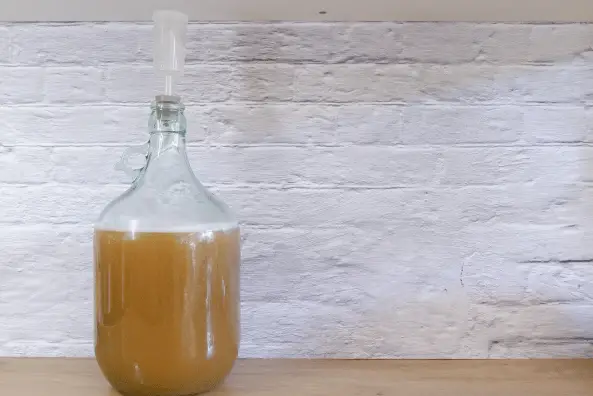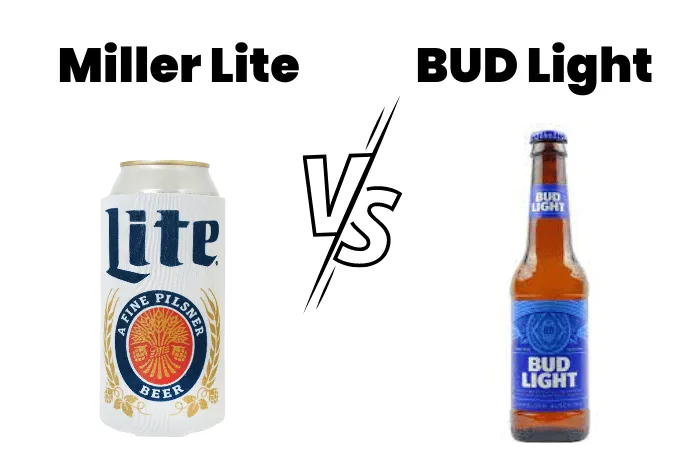As a beer connoisseur, it’s important to understand the history and brewing process of various types of beers. This blog post will examine the main differences between two major light beer brands, Bud Light and Miller Lite, and their alcohol content and ingredients.
We’ll discuss how these lite American macro lagers became popular, including Miller Lite’s claim as the first light beer on the market. We’ll also take a closer look at their alcohol content, ingredients, and taste profile.
In addition to examining these big beer brands, we’ll touch on craft beer and its impact on the industry. From Coors Light to Meister Brau Brewery, we’ll cover some other notable names in light beer history, like Adolphus Busch and Rheingold Breweries.
Whether you’re an ardent enthusiast of a single beer type or merely curious about the characteristics that define light beers, read on for a comprehensive examination of this popular (and sometimes contentious) beverage.
Table of Contents:
- Origins and History
- Ingredients, Fermentation, and Brewing Process
- Flavor Profile and Mouthfeel
- Color
- Consumer Preferences
- Craze & Legal Battles Over Ingredients
- FAQs in Relation to Miller Lite vs Bud Light
- Conclusion
Origins and History
Miller Lite and Bud Light emerged in the mid-20th century and have since become iconic light beers. Miller Lite was brought into being in 1967 as a reply to the burgeoning preference for light beers, like Schlitz, which had been accessible since the 1950s.
It quickly gained a following but began losing market share in the early 1990s due to increased competition from other light beers like Coors Light and Budweiser Select. Since its original introduction in 1876 as “Budweiser,” Anheuser-Busch’s light beer has undergone various changes, culminating with the 2008 merger with InBev and renaming it to “Anheuser-Busch.” Louis, Missouri, under its original name, “Budweiser.”
The beer underwent several changes over time before being renamed “Anheuser-Busch” in 2008 after merging with Belgian brewer InBev.
Miller Lite has managed to capture the attention of different demographics through its savvy marketing campaigns, such as sponsoring NASCAR races and partnering with sports teams like the Milwaukee Brewers baseball team.
On the other hand, Anheuser-Busch has leveraged its long history by launching new products that have become quite popular among millennials who try out various flavors and types of beer; for example, Lime A Rita or Radler Beer Shandy.
These beers boast a low alcohol content compared to others (4%-5%), so they can be enjoyed responsibly without feeling overly inebriated afterward – making them more likely to purchase these products than traditional lagers or ales.
Miller Lite vs Bud Light: Ingredients and Brewing Process

Ingredients, and Brewing Process
The ingredients used in the brewing processes of Miller Lite and Bud Light are quite similar. Both beers use water, barley malt, corn syrup (or sugar), yeast, and hops. The main difference is that Miller Lite uses a blend of six different hop varieties, while Bud Light only has one.
Fermentation
Both beers share the same strain of yeast for fermentation, which helps impart their unique flavor profiles while also allowing a lower temperature and fewer off-flavors to be produced during the process. This type of yeast ferments at a lower temperature than other strains, producing fewer esters or off-flavors during fermentation. It gives both beers a cleaner taste with fewer “wonky” notes in some different brews.
Miller Lite and Bud Light: Flavor Profile, Mouthfeel, and Color

Flavor Profile
Regarding the flavor profile, Miller Lite and Bud Light differ subtly yet distinctly. Miller Lite has a spicier, hoppier taste that is more complex than the minimal taste of Bud Light. Both beers have a smooth mouthfeel with pleasant carbonation, but their aromas are different – Bud Light has almost no odor, while Miller Lite boasts medium malt with a hops smell.
Miller Lite’s complexity can be attributed to its use of two-row barley and four hop varieties: Galena, Saaz, Cluster, and Cascade. Combining these ingredients creates an intense bitterness balanced out by adding corn syrup for sweetness. On the other hand, Bud Light uses rice instead of barley and only one type of hop (Hallertau Mittelfruh). This single-hop variety provides a milder flavor than Miller Lite’s more intense bitterness.
Mouthfeel
The mouthfeel between these two popular light lagers differs slightly due to their brewing processes. Creating a lighter beer like Miller Lite or Bud Light requires longer boiling times which helps remove somebody from the beer giving it a thinner texture on your tongue when drinking it cold or at room temperature. Additionally, both beers contain higher levels of carbon dioxide, adding fizziness and giving them their signature crispness that many people enjoy about light lagers, such as these two brands.
Miller Lite and Bud Light possess a delicate flavor profile, with a mild sweetness that makes them easy to consume. Moving on to color, the two beers have distinct differences in their hues.
Color
Regarding the appearance of Bud Light and Miller Lite, there’s no real winner or loser. Both beers have a light golden tint and a Standard Reference Method (SRM) rating of 2-3 on the scale, making them both very transparent. It means you can see through either beer without any obstruction from sediment or other particles in the liquid.
FAQs in Relation to Miller Lite vs Bud Light
Is Miller Lite better than Bud Lite?
It is impossible to definitively answer whether Miller Lite or Bud Lite is better, as it ultimately comes down to personal preference. Yet, when it comes to attributes such as flavor, scent, and feel in the mouth, there are certain distinctions between these two brews. Generally speaking, Miller Lite has a lighter body with less bitterness than Bud Light and contains fewer calories per serving. Additionally, Miller Lite tends to have more hop character in its flavor profile, while Bud Light usually leans towards a maltier taste. Ultimately, personal preference will dictate which beer is preferred.
Is Miller Lite healthier than Bud Light?
Miller Lite and Bud Light are light brews, meaning they have a lower calorie count and alcohol content than traditional lagers. Despite having similar calorie and alcohol content, Miller Lite offers more health benefits than Bud Light. Miller Lite contains significantly fewer carbs and sodium than Bud Light, making it the healthier option. Therefore, if you’re looking for a healthier beer option that still offers some flavor without being overly heavy on your stomach or waistline, then Miller Lite is likely the best choice between these two brands.
How does Bud Light next compared to Miller Lite?
Bud Light and Miller Lite are both light lagers but have distinct differences. Bud Light has a slightly higher alcohol content at 4.2% ABV compared to Miller Lite’s 4.17%. Additionally, the taste of Bud Light is generally described as having a sweeter flavor with more noticeable hop bitterness, while its crispness and lighter body typically characterize Miller Lite. If you’re looking for something more flavorful and with a higher alcohol content, then Bud Light is the way to go.
Why is Miller Lite so popular?
Miller Lite has earned a spot among the most beloved brews in America, with its light flavor and low-calorie content making it an ideal refreshment for many. Miller Lite’s smoothness makes it a perfect selection for those who wish to enjoy an ale without feeling bogged down or too stuffed. Additionally, Miller Lite’s affordability makes it an attractive option compared to other craft and imported beers on the market. It has become so popular that many bars now offer multiple Miller Lite varieties, such as Lemonade Shandy or Nitro cans. Ultimately, this iconic American lager appeals to people who want something familiar yet enjoyable when out with friends or relaxing at home after work.
Conclusion
In conclusion, Miller Lite and Bud Light are popular beers with different origins, ingredients, fermentation processes, and flavor profiles. While both offer a light beer option for those who prefer less alcohol content or fewer calories in their drinks, the differences between them can be tasted in terms of mouthfeel and bitterness. Ultimately, it is a matter of individual taste as to which beer one prefers; some may enjoy the clean flavor of Miller Lite, while others may appreciate Bud Light’s smoother finish. No matter your choice, you’re sure to find something special with either miller lite vs. bud light.
If you’re looking for unbiased reviews on Miller Lite and Bud Light and the latest in beer equipment, subscription services, and home brewing techniques, look no further! Our blog has everything you need to make informed decisions about your next brew.
Also Visit: Lager vs Amber: What’s the Difference? The Ultimate Guide

